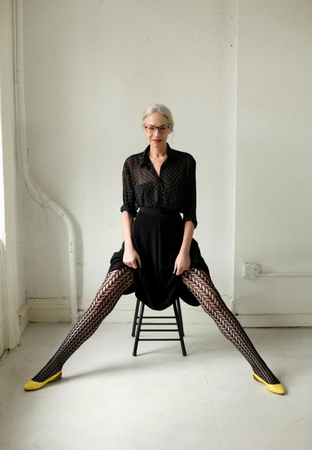Cheryl Swanson’s recent article on Popsop discussed the ever-growing Generation Z and their influence over the larger populous. But this increasingly influential consumer group represents just one part of the age debate. The other? Anyone 50+. One third of the U.S. population will be over 50 by next year and whilst this consumer group may have made up a negligible part of the consumer demographic in past years, they are now stepping up and raising their expectations.
The taste and spending power of the older generation has definitely changed in recent years. Many have ‘second life’ aspirations that come true after 50— once children leave home or the freedom of retirement kicks in. We only have to look at the social media arena to realize the size of the growth opportunity. It is no longer enough—with a new and growing stream of dedicated blogs and websites such as High 50—to just refer to the silver surfer. And this highlights a very real—and largely untapped—opportunity for brands across the board to create and design for a captive, affluent and discerning market.
We’re clearing selling everyone short by overlooking this age group—lumping them into one group worthy of only one design aesthetic and one market approach. The over 50’s are an increasingly desirable demographic that is solvent and able to enjoy life and we should be designing resources or brand choices for this sector with this in mind. And this couldn’t be more prescient now as the design savvy Boomers come of age.
How fashion brands target 50+ age group
Let’s take a look at fashion—one of the only industries that is actually beginning to take the over 50’s seriously and as respected consumers.
American Apparel—using 60 year-old Jacky O’Shaughnessy to model its ‘Advanced basics’ range—is one brand boldly using the older generation as the face of its campaigns. Rather than peddling ‘old lady’ cardigans, it is tapping into the mindset and attitude of the wearer as well as promoting the wearability of great design for all. Whilst the Mary Portas range for Debenhams—aimed squarely at the over 40’s—comprises a dedicated range of bright, bold choices and cuts for the more mature figure.
And when it comes to housing and social care, this sector is one requiring continued innovation and attention. So it’s refreshing to see some amazing and exciting architectural developments springing up that are anything but boxy and institutionalized. A cubist inspired luxury space in Portugal is actually positioned as a nursing home, hotel and hospital. And in Plussenberg, Rotterdam, a playful, brightly coloured apartment block for the over 50’s was inspired by the forthcoming retirement of the hippie generation. And these are just two in a stream of similar developments.

Photo: Jacky in the American Apparel campaign, from Facebook
Brand design for the elderly consumers
Fashion and architecture are making steps to connect with and cater for this wide-reaching demographic—but what about everyone else? What about brand design? Studies report that this audience are willing and have the confidence to try new things and don’t worry so much about the risks. But, on the flip side we can’t deny that with age come some certain physical limitations. So what about innovative food or personal care packaging? More practical and ergonomic structural solutions packaged up in a daring, cool way?
Understandably, designing for this demographic is a hard one to get right. It’s not about pigeonholing by age—no one wants to be targeted in that way — but neither is it necessarily about the ageless or more democratic offer. There will always be design classics that will appeal to any age—the Eames chair, the Burberry Trench…but there is also the opportunity to design well and with specificity—to inspire rather than offend.
With the over 50’s having maybe another 30-40 years of active consumerism, grey money has just as much power to change consumer culture as that of Gen Z. With brand design also a progressive force for cultural change, brands need to start feeling the true value of time—appreciating rather than depreciating this hugely significant and pivotal audience.
About the Author
Sophie Maxwell is Insight Director at Pearlfisher.
